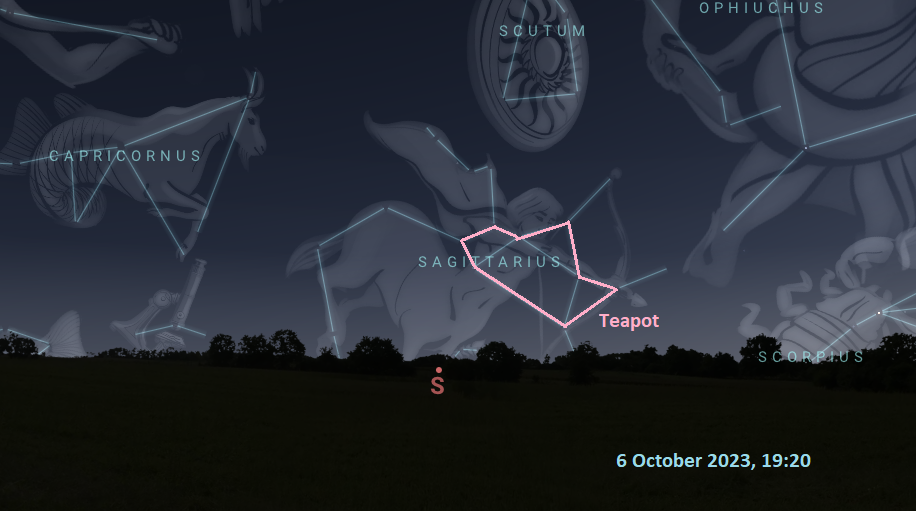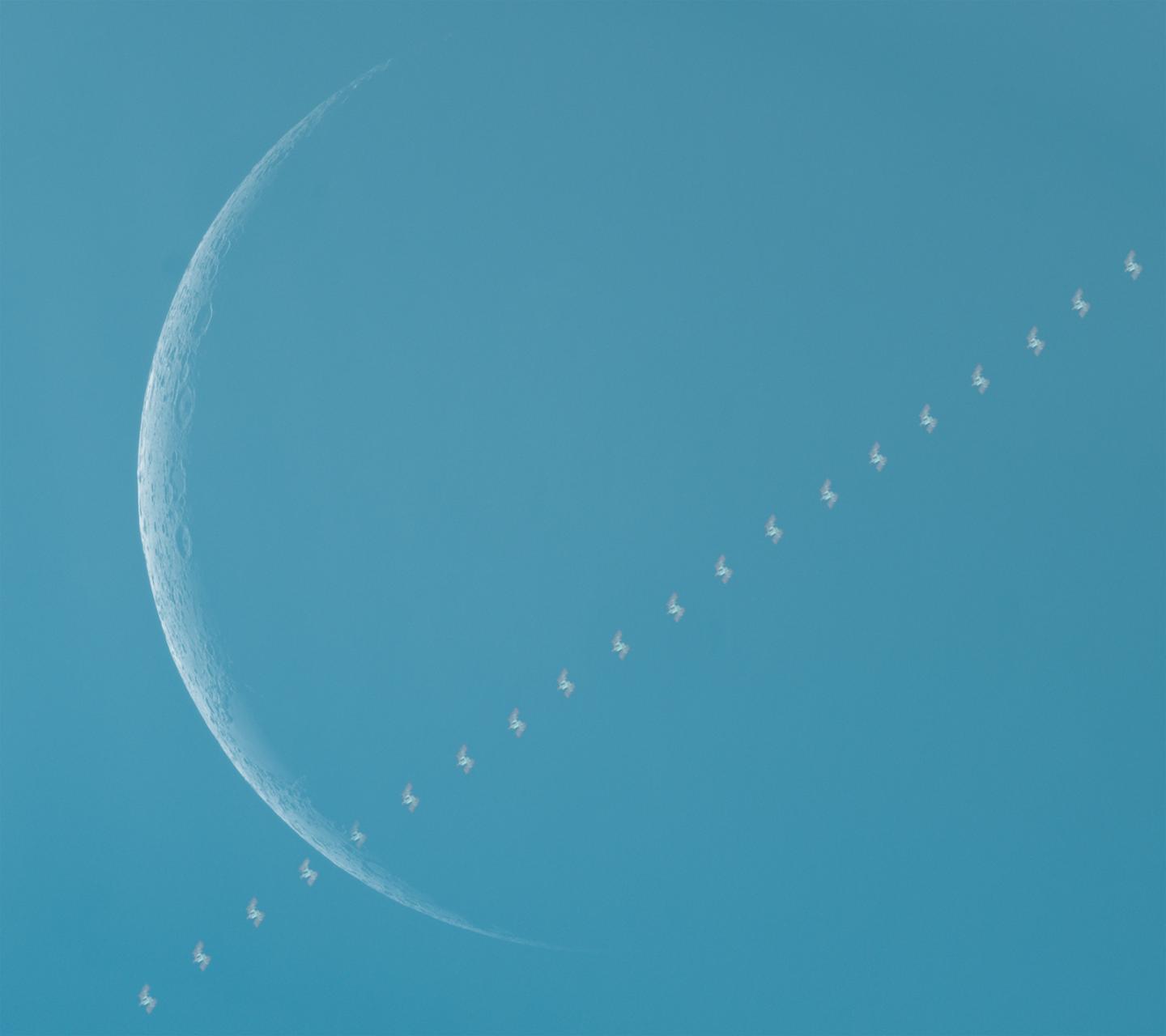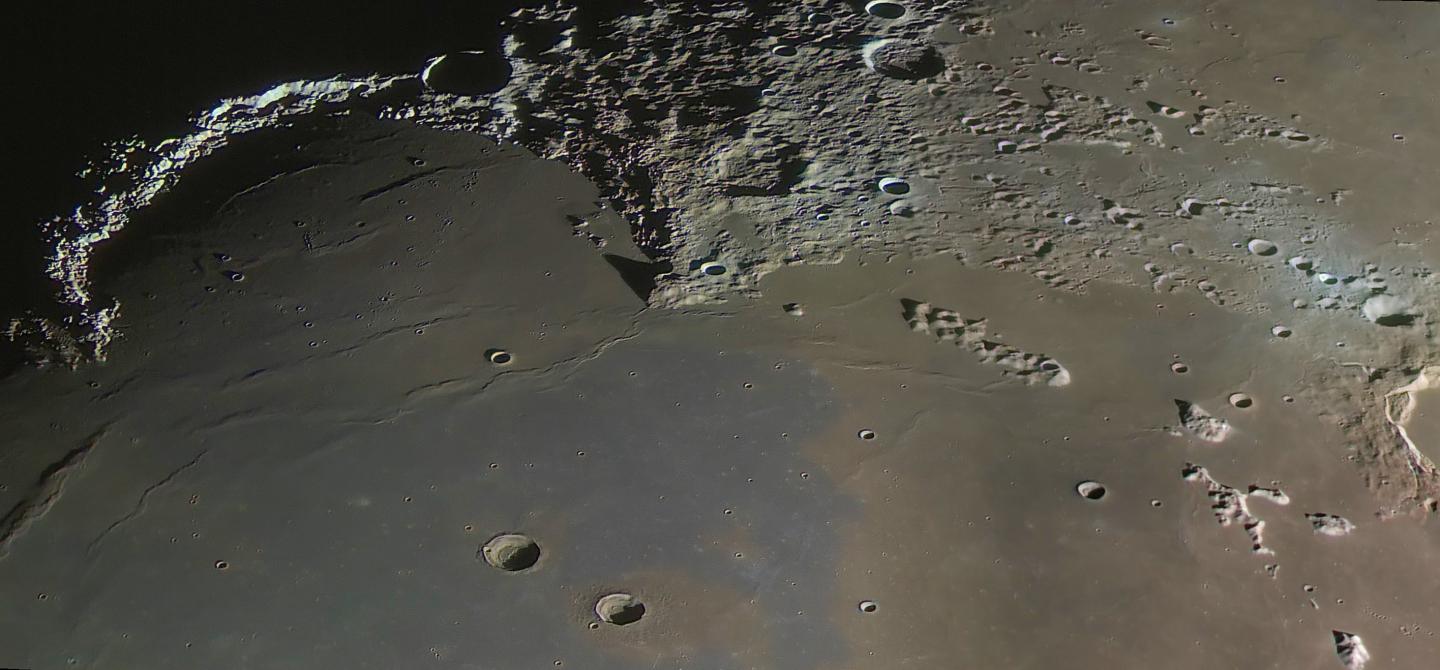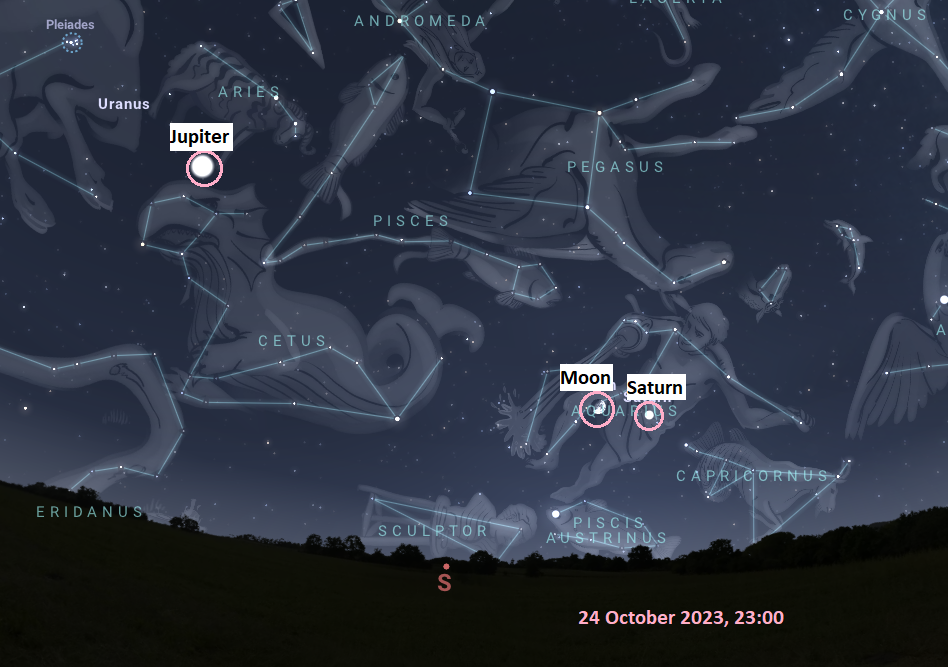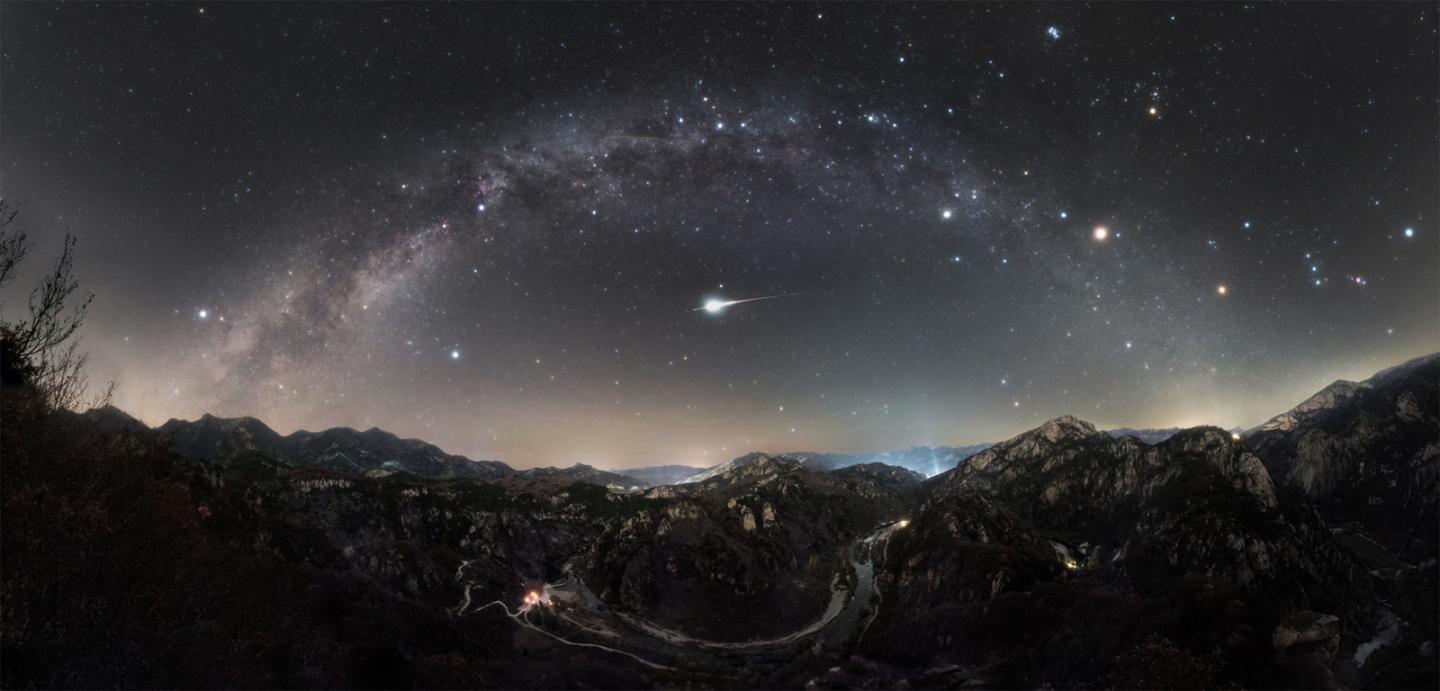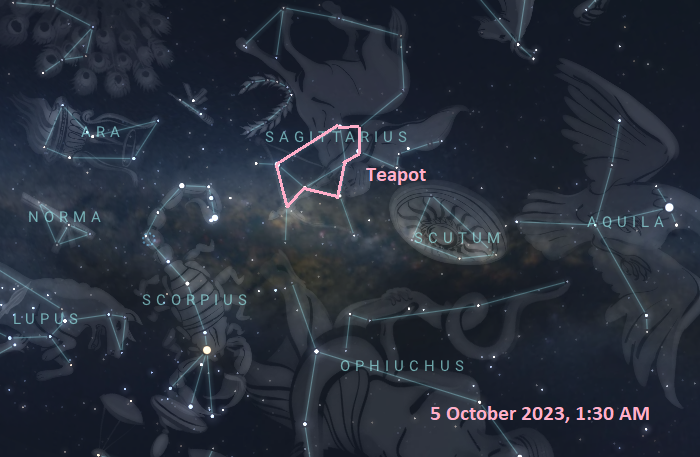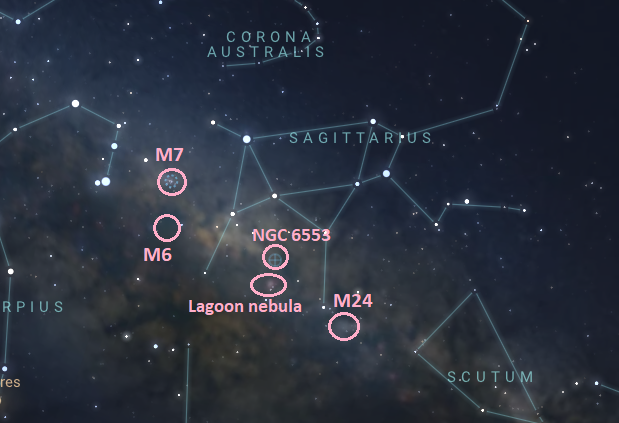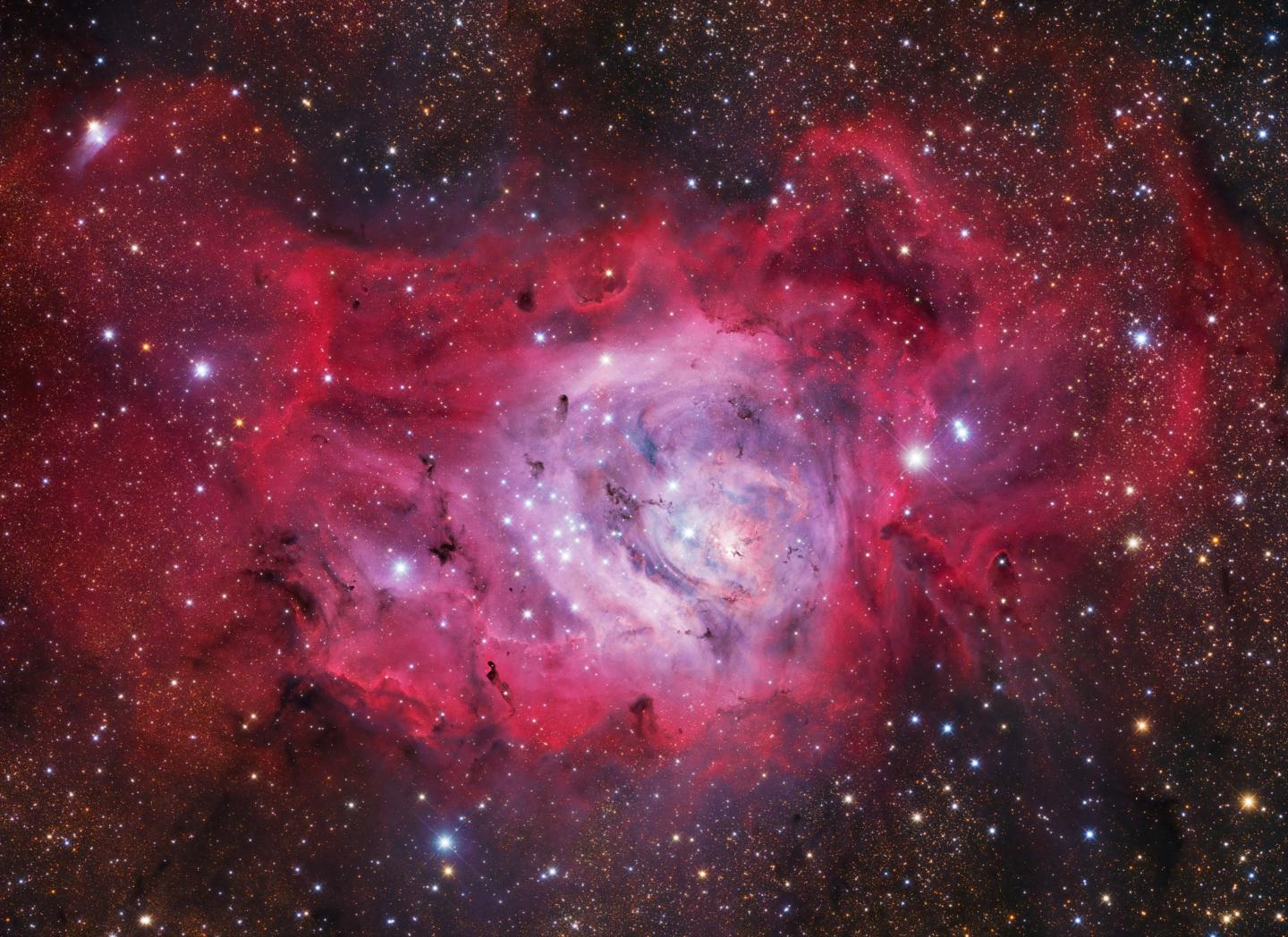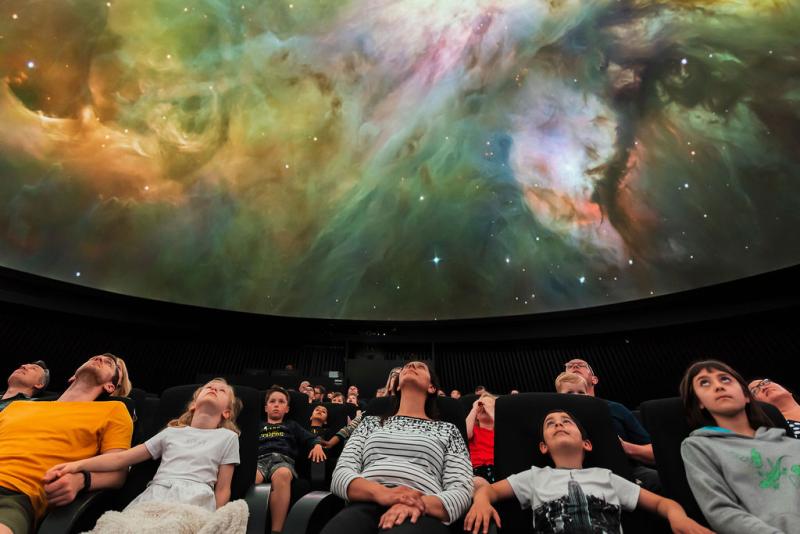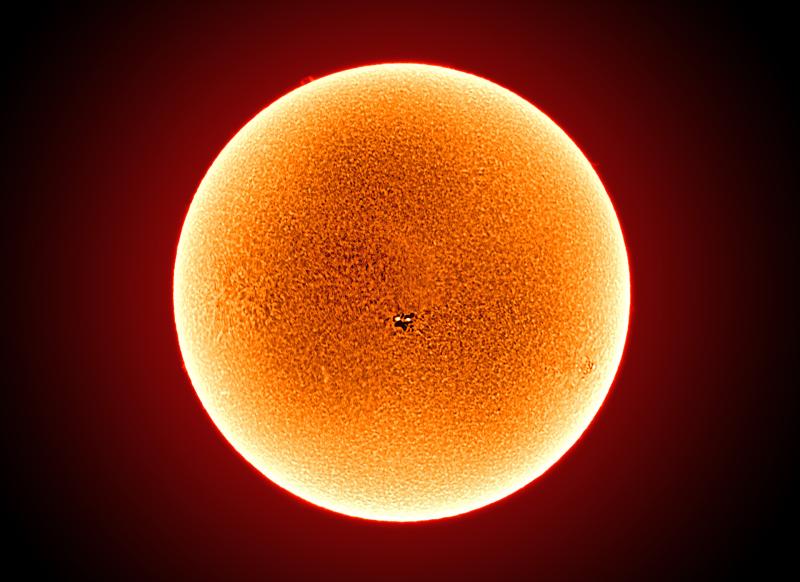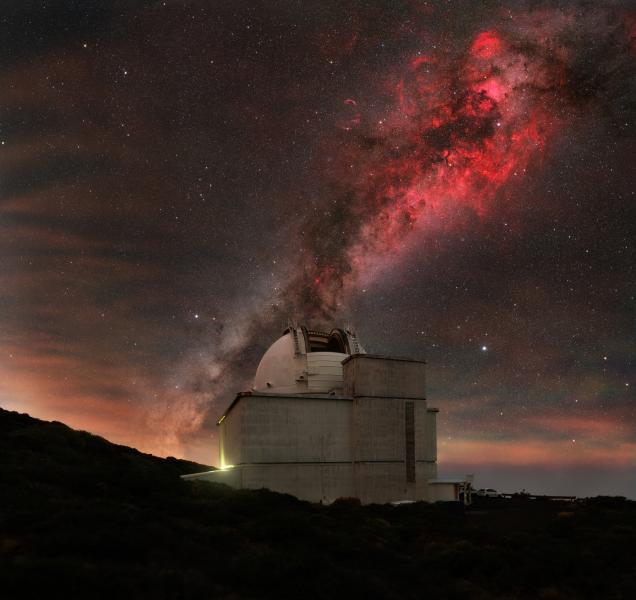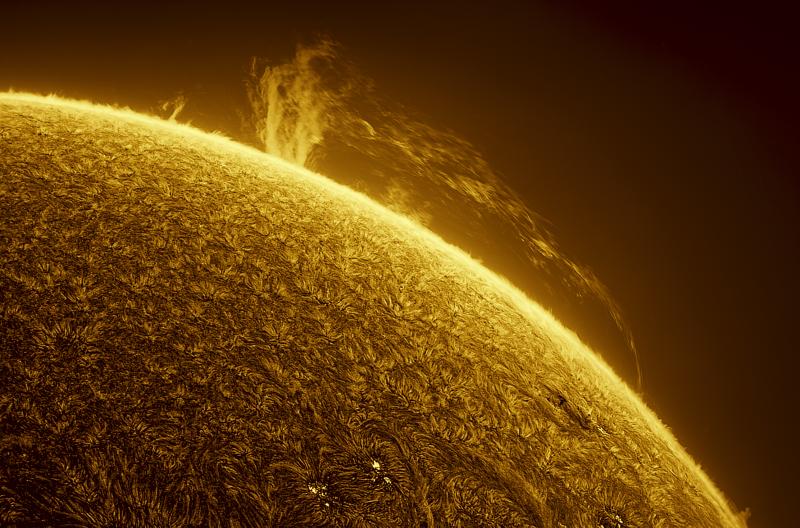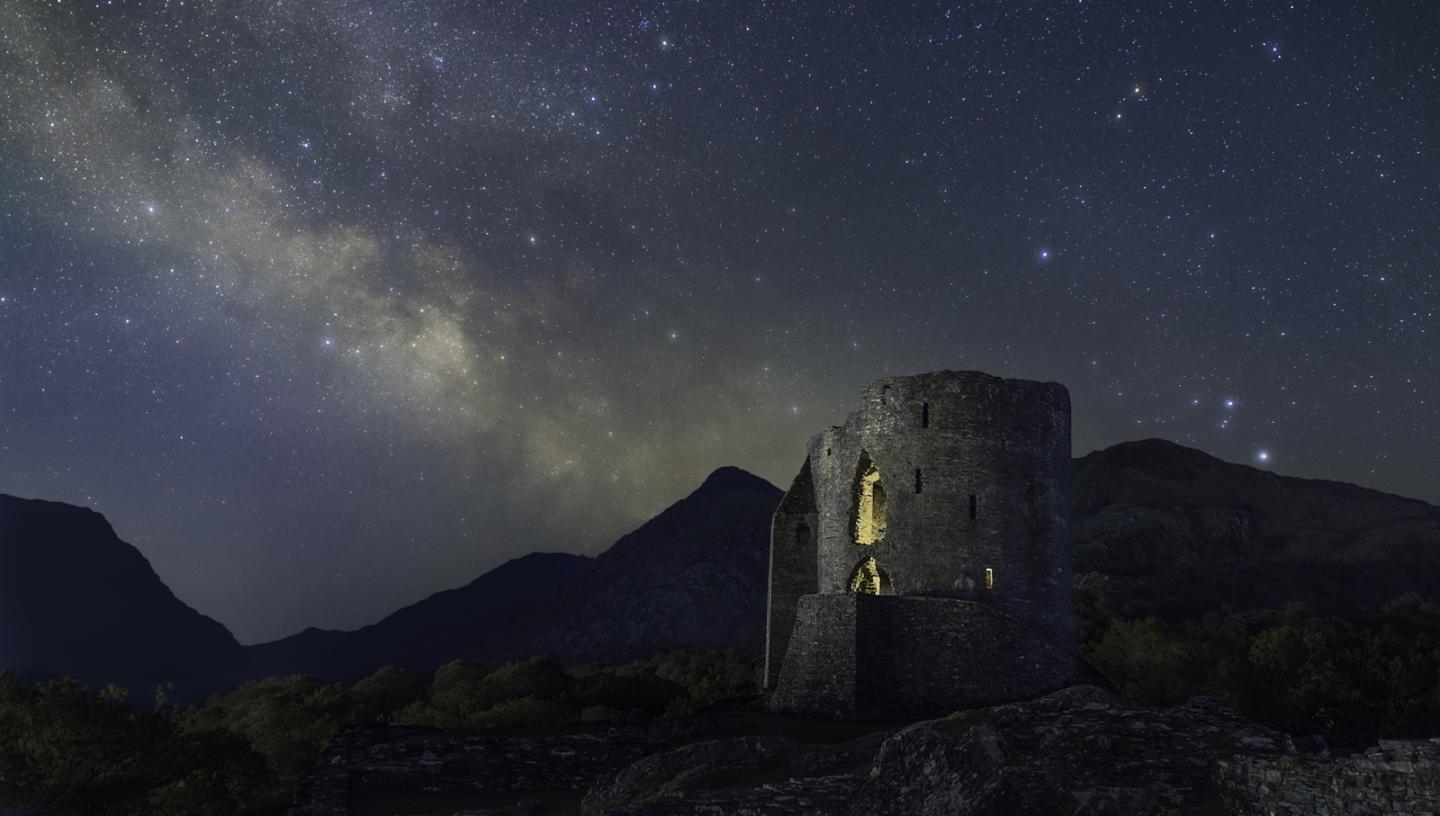
Discover what to see in October's night sky, including two gas giants, the International Space Station, two meteor showers and a celestial pot of tea.
Written with Aleksandar Volponi, Work Experience Student
Top 3 things to see in the night sky in October 2023
- Throughout the month - spot the teapot asterism
- 22 October - find some craters on the Moon
- Throughout the month - see if you can spot the International Space Station!
(Details given are for London and may vary for other parts of the UK)
Look Up! Podcast
Subscribe and listen to the Royal Observatory Greenwich's podcast Look Up! As well as taking you through what to see in the night sky each month, Royal Observatory astronomers pick two space news stories to talk about. October's episode is available to listen to below.
At the start of October, join the conversation on X (formerly Twitter) (@ROGAstronomers).
Our podcast is available on iTunes and SoundCloud.
A celestial pot of tea
If you enjoy a good cuppa, why not treat yourself to a celestial pot of tea! Lying low above the horizon in the south is the constellation of Sagittarius, home to a well-known asterism called “The Teapot”.
With a very dark sky, our home galaxy the Milky Way will appear as steam rising out of the spout of the Teapot, with the centre of the galaxy lying to the upper right of the tip of the spout. At this time of the year, the Teapot asterism is visible both from the Northern and the Southern Hemisphere. From the UK it can be seen low on the southern horizon right after sunset, but keep in mind that this asterism never rises very high at these latitudes.
The Southern Hemisphere has a much better view at this time of the year, as the Teapot is visible all night high above the horizon, which means it is not affected by light pollution as much as it is when it’s low on the horizon.
Spot the ISS
During October, there will be a number of passes of the International Space Station. Also known as the ISS, it is the largest artificial satellite in orbit around the Earth and appears as a bright point of light moving across the sky in a couple of minutes.
Orbiting at an average altitude of 400 km above the surface of the Earth, the ISS travels at a whopping 17,500 miles per hour, or 28,000 kilometers per hour, and takes around 90 minutes to complete one orbit around the Earth. This means that on the ISS, you get to see the Sun rise and set over the Earth 16 times every day! Due to its large solar panels, the ISS is easy to see because it reflects light from the Sun.
The ISS is visible every few days for a given location, and for detailed information about visible passes at your location, visit NASA’s Spot the Station website. This website will allow you to see the precise start and end time of ISS passes, and the exact path on the sky.
For example, the ISS will be visible from London on 1 October at 19:18. The space station will start its journey on the western horizon, moving south-west, and reaching a maximum height of 34 degrees in the sky. This passage will last for 6 minutes.
You can find out more about what we use satellites for in our brand-new planetarium show, We Are Guardians.
The Moon
For those keen on doing some lunar observations, we recommend you wait until the 22nd when the Moon reaches its first quarter phase, as this provides the perfect opportunity to spot craters! Grab a pair of binoculars, or a telescope, and direct your gaze at the terminator, the dividing line between day and night time side on the Moon. It’s along this line that you’ll see shadows cast by mountains onto the lunar surface, and you’ll also spot the shadows cast by crater walls.
See if you can spot Plato crater, which lies on the northern edge of Mare Imbrium, the Sea of Rains. The crater has a diameter of over 90 km and is one of the easiest to recognise because of its dark floor. Lying close to Plato are the Lunar Alps, a mountain range that was formed by the same impact event that created Mare Imbrium.
The planets in October 2023
This month the gas giants Jupiter and Saturn make a welcome return to the evening sky, with both planets visible towards the south-east after sunset. These planets are great targets for a pair of binoculars or a telescope, as you may even be able to make out some of their moons!
See if you can spot the four largest moons of Jupiter, known collectively as the Galilean moons in honour of Galileo Galilei who discovered them in 1608. When turning your attention to Saturn, try to find Titan, Saturn’s largest moon. It is the only moon in the entire Solar System that has an atmosphere, and the only other Solar System body that has liquid on its surface.
But don’t expect to find liquid water on Titan, the temperature is far too cold for water to exist in a liquid state. What you will find are lakes of liquid hydrocarbons – now that would make for an interesting cup of tea!
October meteor showers
As for meteor showers, we have two notable ones this month. The Draconids are active from 6 to 10 October, and peak on the night of 8 October when an average of 10 meteors per hour is expected. The Draconids are associated with the comet 21/P Giacobini-Zinner. This meteor shower, like other, carries a name after a constellation it appears to radiate from, in this case Draco.
The second meteor shower active throughout the entire month and into November is the Orionids, which peak on the night of the 21st. On this night, an average of 25 meteors per hour is expected. This number sometimes varies, and in 2007 as many as 70 meteors per hour were recorded. This meteor shower is associated with the famous Halley's Comet, the only known comet that can re-appear twice during a human life.
A third shower, the Taurids, will start in the Northern Hemisphere on 20 October and be active until 10 December, peaking 12-13 November. This shower however has a low hourly rate and very slow meteors.
Read our meteor shower calendar
October's skies in the Southern Hemisphere
This month, our readers from the south get to share the Teapot asterism with us from the north! The Teapot asterism is a part of the constellation of Sagittarius. The constellations that are located near the North or South Celestial Pole can only be seen from their respective hemispheres, but constellations like Sagittarius which are somewhere in the middle, can be seen from a range of latitudes on both hemispheres.
If you have a telescope, there are some great deep sky objects worth looking for near the Teapot. You could have a look for M6, M7, M24 or NGC 6553, all star clusters, or the Lagoon nebula - a stunning stellar nursery!
Moon phases for October 2023:
Last Quarter: 6 October, 13:47
New Moon: 14 October, 17:55
First Quarter: 22 October, 03:29
Full Moon: 28 October, 20:24
Never miss a shooting star
Sign up to our space newsletter for exclusive astronomy highlights, night sky guides and out-of-this-world events.
You may also be interested in
Header image: Dolbadarn Castle - Home of Welsh Princes by Robert Price | Astronomy Photographer of the Year 2023 People and Space
